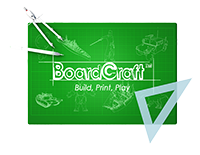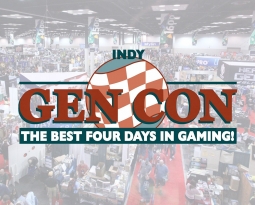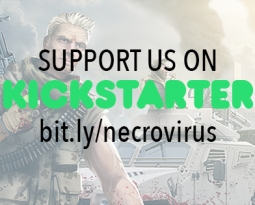My name is Ryan Porter and I work in Business Development at BoardCraft. I am also part of the BoardCraft Demo Team which means I spend a lot of time either playing NecroVirus or refereeing games for new players. I wanted to take a look back at the journey that led to the current version of NecroVirus.
I did not see the original version of NecroVirus. My first experience with the game was over Thanksgiving weekend 2014. The game had several types of dice used for different parts of the game. There were random event charts for the beginning of the turn and scrounging charts that you rolled on depending on what building you were in. The survivors had bases that could be attacked by zombies and the players had small dry erase boards to keep track of their survivors. The board was two dimensional and there were trees that interfered with line of sight for sniper shots.
There had been a few changes by the time I had joined the company in April. The bases were gone. The material chits that used to defend them were now used as makeshift barricades to keep zombies from entering the scrounge rooms. The scrounge chart was also gone. Instead you drew from the scrounge deck and a “Supplies” card awarded you any combination of supplies you wanted. There was another deck for random events and the dice were down to d20s and d6s. I still had the 2D board, but the 1/72 scale 3D board had been printed.
My first time using the 3D board was at the Tabletop and Boardgame Learning Expo, or T.A.B.L.E., in Grapevine, TX. The board was beautiful. Full color 3D printed buildings made out of sandstone. I demoed that weekend using only half of the board and it still measured two feet by four feet with some buildings over 6 inches in height. The 3D buildings added a level of immersion that the 2D board just could not replicate. However, the weight of the buildings and the number of cases it took to transport them safely were a difficulty.
After T.A.B.L.E. there were some significant changes. Quintin, who is our community manager, and I went to playtest the modifications with two of the three lead designers, Arvin and Dave, in Pella, IA. The board had gone from 1/72 scale to 1/144 and from sandstone to plastic. The scrounge tiles had become first doorways and then the trays that are still in the game. Survivor actions had switched from “declare all actions for your team and then execute” to “activate each survivor sequentially” and the survivors now had action points to spend. Zombies had gone from killing survivors immediately to infecting them. The odds of infected survivors becoming zombies were tinkered with all week. Each building now had a mission specific supply load out for when “Supplies” cards were drawn. The survivors spent the first half of the playtest week having two attacks and the second half having only one, as we realized that two attacks removed almost all threat from the zombies. The d20 was the only surviving die type.
By the time I got to TexiCon, also in Grapevine, the game was down to fine tuning the rules. The feedback from the attendees was amazing. Between the feedback and the survivors’ board positions at the end of the games some changes were made to action point costs. The players had a blast.
Until next time.
–Ryan Porter






